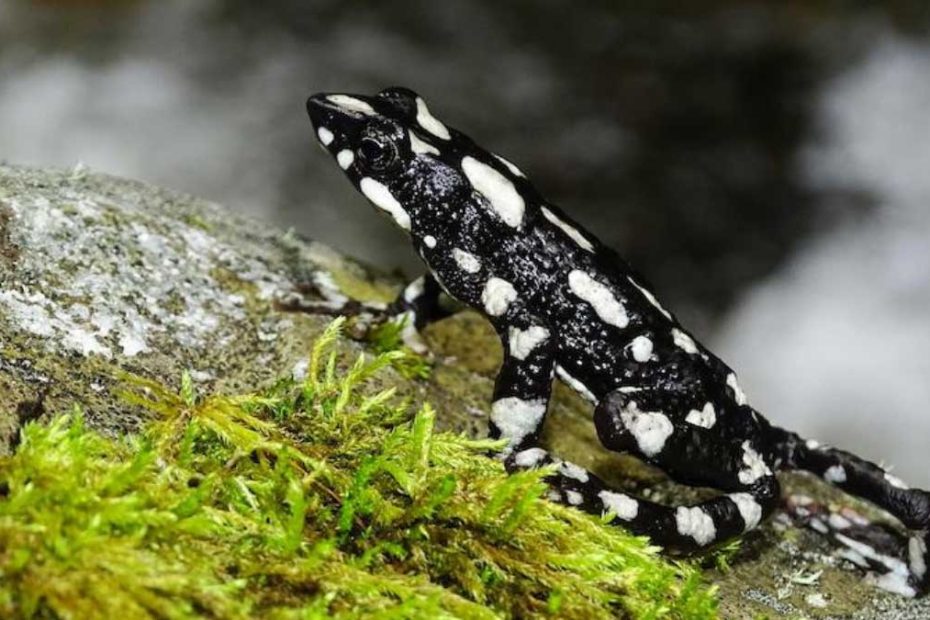The Harlequin toads (Atelopus varius), classified under the diverse genus Atelopus, are marvels of nature. Native to Central and South America, these toads are one of the most charismatic and colorful members of the group. They come in an impressive palate of colors including black, brown, green, yellow, orange, red, and sometimes purple. These vibrant color combos have earned them the nickname “clown frogs.”
This guide takes a deep dive into the world of harlequin toads. We’ll discuss why they’re considered excellent environmental indicators and their current conservation status. We’ll touch on the challenges they face in the wild and measures being put in place to help preserve their population. You’ll also find out how many harlequin frogs there are, purple harlequin toad care, and the poisonous characteristics of these unique amphibians.
Harlequin Toads of the Diverse Atelopus Genus overview:
The Harlequin toads, also known as stub food toads, are a group of amphibians under the genus Antelopus. They have gained widespread attention due to their unique appearance, ecological adaptations, and unfortunately their vulnerability to extinction.
Note that these toads have an approximate size ranging from a human baby thumb to an adult thumb. The smallest species of the harlequin toad measures approx. 1 inch.
One of the most striking features of these toads is their vibrant and contrasting colors. As we mentioned earlier, these toads come in a wide variety of colors including yellow, green, red, black, and orange, which often dominate their skin.
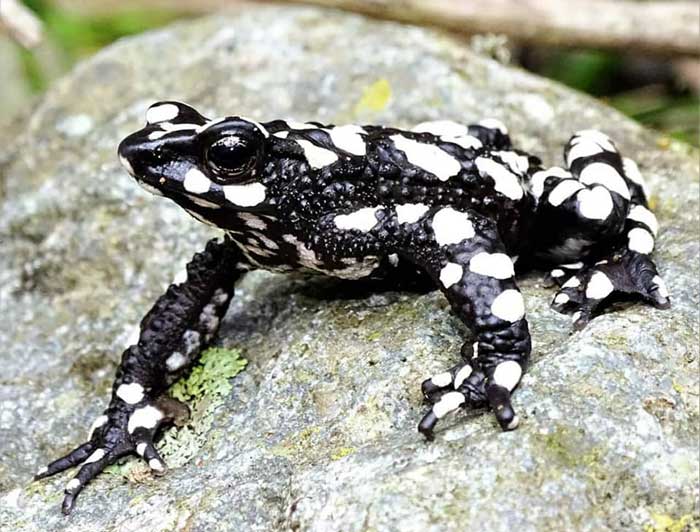
Due to these dazzling hues among these toads, they’re sometimes referred to as the “jewels of the neotropics” or “clown frogs.”
These toads primarily inhabit the neotropical regions of Central and South America—ranging from Bolivia in the south to Costa Rica in the north.
They’re primarily diurnal and you’ll often find them in crevices formed along the streams in pre- and lower-montane forests as well as some humid lowland areas.
Like most toads, these amphibians are primarily terrestrial and only enter the waters during the breeding season.
Harlequin toads diet primarily consists of small arthropods that are usually plentiful in their habitats during the dry season.
The only known predator for this group of toads is the parasitic sarcophagid fly, which is known to deposit its larvae on the thighs of the toads. The larvae then burrow inside the frog and start eating it from within.
Note that these toads are usually hard to spot as they’re spread out in the dense forests in their habitats. However, they’re highly conspicuous during the breeding season when they come down to the streams for the mating rituals.
Unfortunately, harlequin toads have become increasingly rare throughout their range since the early 80s.
This is due to several threats including diseases, loss of habitat, climate change, water pollution, introduced species, and illegal trade. They are currently classified as critically endangered species.
Why Harlequin Toads are Considered Excellent Environmental Indicators
The Harlequin toads are considered excellent environmental indicators. And they’re even used to indicate the quality of water in their environment.
This is due to their sensitive skin, which easily detects changes in their environment. Thus, the presence and health of these toads in streams give biologists an idea of the quality of water they live in.
The toads are also sensitive to climate change issues like temperatures and moisture level changes. This directly affects their breeding behavior and survival.
Tracking the response of these amphibians to these changes can provide data on climate change impact on ecosystems.
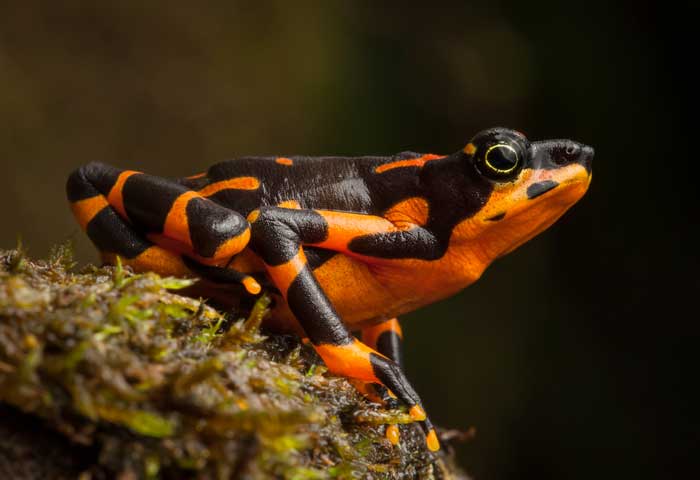
Harlequin toads are also a crucial link in their ecosystem food web. Change in their populations can heavily influence the population of their prey, predators, and competitors within their ecosystems.
Observing such shifts can give insights into the biodiversity and balance of an ecosystem.
Presence of these toads is also linked to the health of the habitat they occupy, including subtropical and tropical forests.
Their high sensitivity to the degradation of their natural habitat makes them bioindicators of the health of forests.
Purple Harlequin Toad Care
If you plan to keep a purple harlequin toad (Atelopus barbotini) as a pet, then you’ll need to ensure you provide it with proper care and nutrition to ensure it stays healthy and lives longer.
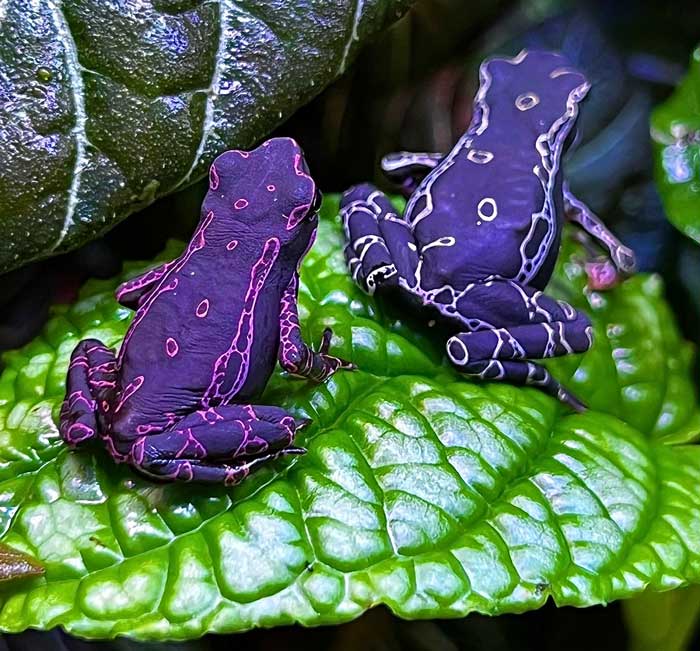
Here are the key purple harlequin care requirements:
- Enclosure size: 18 by 18-inch minimum base dimensions; a larger enclosure is necessary if you’re keeping multiple frogs.
- Temperature: Maintain the temperature in the enclosure between 70 and 78F.
- Diet: Feed your purple toad insects, pinhead crickets, flightless fruit flies, and mealworms.
Are harlequin toads poisonous?
The Harlequin toads are poisonous, just like most toad species out there. Their glandular skin secretions contain poison, which they use as a defense mechanism against predators. For this reason, these toads usually flash their bright colors as a warning to predators that they are toxic and they should stay away.
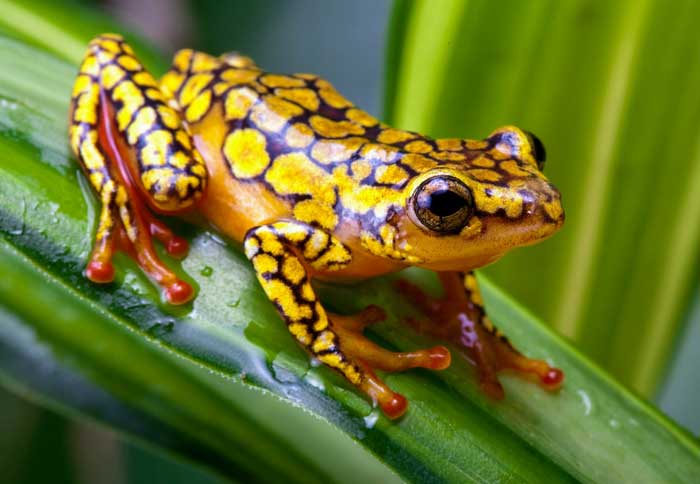
Purple harlequin toad habitat
The purple harlequin toads are native to the rainforests in Northwestern Ecuador and southwestern Colombia.
They inhabit various types of habitats including cloud forests, lowlands, rainforest floors, etc., all of which feature moist surroundings.
The diurnal creatures usually seek shelter under logs and rocks during the day and come out at night to hunt for food.
They can also be spotted in turbulent streams that are filled with boulders and stones, where they lay their eggs during the breeding period.
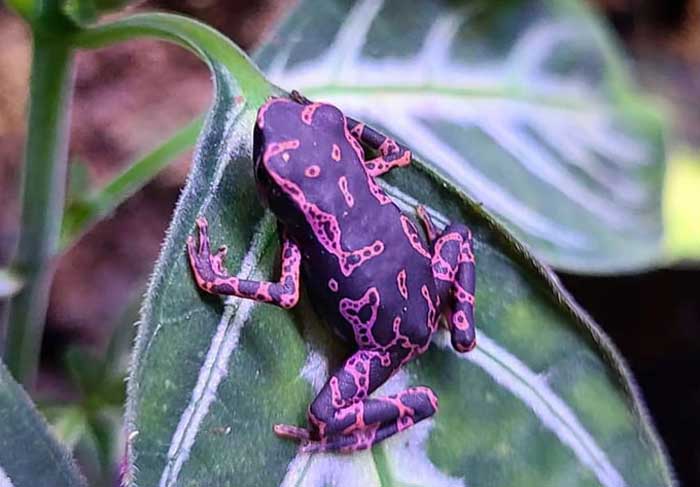
Harlequin toads lifespan
The Harlequin toads lifespan in captivity is approx. 10 years with proper care and nutrition. However, they have a shorter lifespan in the wild of between 5 and 10 years.
How many Harlequin Frogs are There?
The remaining population of harlequin toads is unknown. However, one thing about these toads is for sure; they have increasingly become rare throughout their geographical range.
These unique amphibians face many threats in the wild that threaten their survival, and they’re currently classified as critically endangered by the IUCN Red List and Endangered species by the US Federal list.
Some species of harlequin toads such as the Chiriqui Harlequin (Atelopus chiriquiensis) have completely disappeared and have been declared extinct by the IUCN Red List.
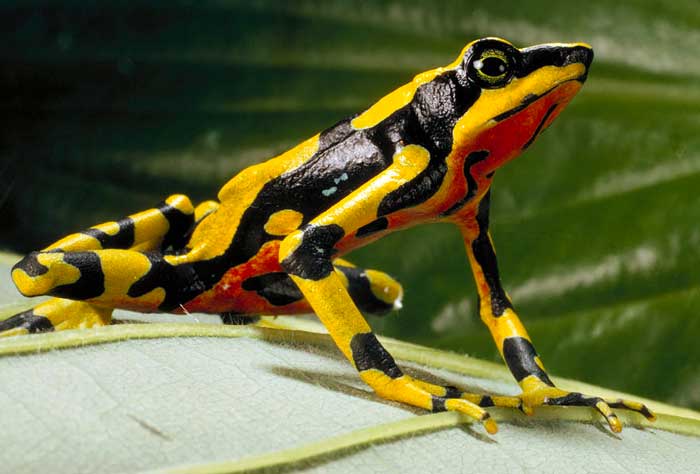
The key threats faced or contributing to the decline of these amphibians in their natural habitats include:
- Diseases, specifically the pathogenic chytrid fungus
- Water pollution
- Habitat loss
- Climate change
- Illegal pet trade
- Competition from invasive/introduced species
Note that various groups, including the Atelopus survival initiative, have taken various measures to help save the remaining species from extinction. These include:
Monitoring and researching of surviving or rebounding harlequin toad species is also ongoing. This helps conservationists better understand how to mitigate the toads’ threats and hence save other harlequins from going extinct.
Habitat protection is another measure being taken to help preserve these jewels of rainforest. This involves creating protected areas while also improving the management of sites that are already in existence.
Introduction of captive breeding programs which involve breeding and raising the amphibians in captivity. At the same time, conservationists focus on ways to mitigate the various threats they face in the wild to help ensure safe reintroduction into their natural habitat.
There’s also some good news: Some of the harlequin toad species that were lost to science or new to science have been rediscovered by biologists and indigenous communities. This gives hope for the future of these toads.
Harlequin Toad Facts
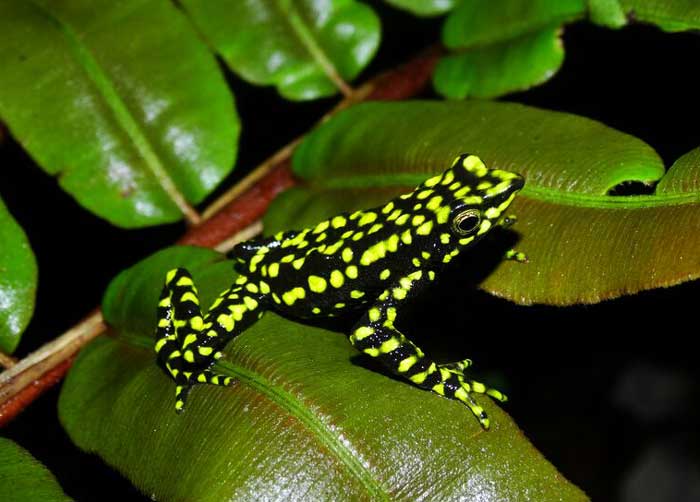
Below are some interesting facts about the harlequin toads:
- Some species of harlequin toads tend to display what looks like a hand wave to the females across the stream/river. This is probably because they can’t hear their calls due to the roaring sound of the waters.
- Another fascinating thing about these toads is that a pair can stay in an amplexus position for up to weeks. And throughout this period, they will forego food and stay committed to breeding. As a result, they tend to lose up to 30% of their body weight!
- Despite being classified as toads, harlequin toads have smooth skins with no warts. Instead, they feature vivid coloration, which ranges from green to rust brown yellow, gray, red molting, lavender, purple, etc.
- Male harlequins lose up to 30% of their body weight during the breeding period as they forego food and stay committed to lengthy mating rituals.
- Harlequin toads tend to hop or walk short distances as opposed to most toad species that usually leap.
- The Mindo harlequin toad, one of the harlequins, has been rediscovered after 30 years of being declared an extinct species.
Purple Harlequin Toad for Sale
If you’re looking for a unique pet, then the purple harlequin toad is a great choice. The unique coloration of these pets makes them increasingly popular as exotic pets in the pet market.
You can find this toad for sale online or in pet stores specializing in selling rare animals.
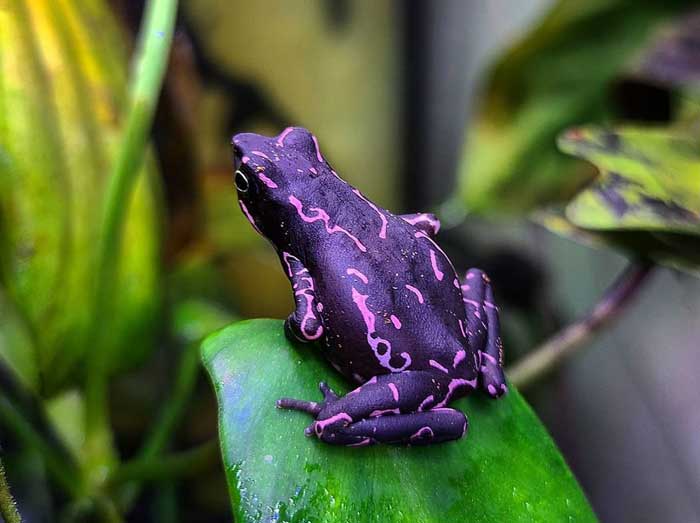
However, you’ll need to check with your local regulations on whether you’re allowed to keep this toad as a pet and whether you need any permits or licenses.
Keep in mind that you’ll need to offer this toad pet proper care and maintenance, including regulated temperatures, quality food items, and clean water.
With proper care and nutrition, you can expect this toad to be your companion for up to 10 years or even more.
Conclusion
Harlequin toads are true jewels of the rainforest. These toads fall under the genus Atelopus and come in a wide variety of shades, including black, brown, green, yellow, orange, red, and sometimes purple. Their unique appearance sets them apart from other toads while making them a captivating group of amphibians for both enthusiasts and biologists.
Unfortunately, the population of these amphibians has been on the decline in the past years and some of the species have even been declared extinct. The key issues threatening their existence include habitat loss, diseases, water pollution, and the introduction of other species. Several measures are already in place to help preserve these unique toads and ensure their survival.

Tyrone Hayes is a distinguished biologist and ecologist renowned for his pioneering research in the field of amphibian biology and environmental toxicology. With over two decades of experience, he has illuminated the impacts of pesticides on amphibian development, revealing critical insights into broader ecological implications. Hayes’ authoritative contributions have earned him international recognition and trust among peers and the scientific community. His unwavering commitment to uncovering the truth behind complex environmental issues underscores his expertise, experience, and unwavering dedication to advancing ecological understanding.
